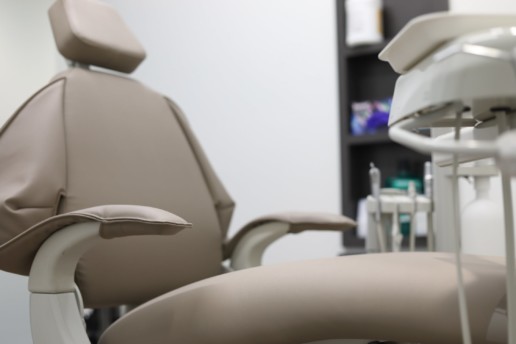Bringing personal services to work
Onsite employee benefits and personal services are now within reach of many employers. Read this blog post to learn more about onsite employee benefits.
Onsite employee benefits that go beyond big-ticket items like health clinics, gyms and child care centers are now within the reach of many employers.
When Cassandra Lammers, vice president of total rewards at Audible Inc., a publisher of audio books in Newark, N.J., wanted to encourage employees to schedule regular dental visits, she focused on the large percentage of the firm's employees who are part of the Millennial generation. These younger workers tended not to use their dental benefits, claims records showed.
To address the situation, Lammers began researching mobile dental services, looking for a vendor that would provide dental care onsite during the workday. That was not as easy as it sounded. "Most of these services are designed to help the elderly and the disabled who are not able to get to a dentist's office," she noted.
Also see: 6 Employee Benefits Trends in 2017
After many months of looking, Lammers connected with Henry the Dentist, a mobile dental office that parks its trailer at an employer's location for a few days to provide onsite dental services. The trailer offers state-of-the-art dental services and can serve three patients at a time.
The biggest selling points for Audible were the convenience for employees and the fact that all of the dentists were in-network providers for the company's dental plan, so audible does not have to pay for the service.
"We now schedule a few days each quarter to help employees get into a normal cycle for dental visits," Lammers said. The initial visit was scheduled to last only two or three days. However, employee demand for appointments was so great that the visit lasted six full days to serve 189 employees. Lammers expects to schedule five days per quarter going forward.
"The feedback from employees has been fantastic, and they love the convenience," she said.
Alexandria Ketcheson, marketing and brand director at Henry, said that under the company's current employment model "all our dentists are full-time employees of Henry," and that "a large part of our promise to our corporate clients is that their employees will see the same medical staff during every visit."
Fill'er Up
Onsite benefit programs should be designed to save employees time and to make their lives easier. Miami-based Carnival Cruise Line offers a range of onsite benefits to accomplish just that, including dry cleaning, a coffee shop and deliveries from a flower vendor every Friday so that employees can buy fresh flowers for the weekend.
"This is all part of our effort to be an employer of choice," said Tami Blanco, the company's vice president of shoreside human resources. "We focus on providing services that employees use or need regularly. Employees want to spend their time off with family, not running errands."
Also see: Our Employee Benefits Team
One of the more popular onsite benefits is access to Neighborhood Fuel, a service that comes to Carnival Cruise employees in South Florida and fills up their gas tanks in the parking lot while they are working.
By using a smartphone app, employees can request a fill-up, leaving the gas cap door ajar on their cars. Once the fuel truck completes the fill-up, the app sends an alert with the total cost of the gas.
So far, half of Carnival Cruise's Miami-based employees have signed up to use the service, and 75 percent of those employees say it is of great value to them, Blanco said.
Beware Upselling
When an employer offers any onsite benefit to employees, it comes with an implicit endorsement of the vendor's services, so it's important for employers to proceed with caution when choosing those vendors.
Also see: The Most Desirable Employee Benefits
Carnival Cruise Line, for example, often offers new services to one group of employees as a pilot project to see if it is something the company wants to offer to all employees.
Before offering onsite dental care, Lammers not only read the reviews of the dental providers working for Henry the Dentist but also asked pointed questions about how the service ensures the safety of employees while they are walking to and from the mobile facility and while they are inside receiving treatment. "We also wanted to understand how they operate [and] how they interface with employees, ensure confidentiality, et cetera," said Lammers, who inspected the mobile dental facility personally.
Once employees begin using any onsite service, employers should check in periodically to make sure employees are happy with the service and comfortable using it. For example, if employees feel a vendor is putting pressure on them to buy more or to upgrade, that's something an employer may want to address directly with the vendor so that employees don't feel pressured.
SOURCE: Sammer, J (5 July 2018) “Bringing personal services to work” (Web Blog Post). Retrieved from https://www.shrm.org/resourcesandtools/hr-topics/benefits/pages/bringing-personal-services-to-work.aspx
15 employee benefits on the rise
A number of benefits, other than employer-sponsored health insurance and retirement plans are on the rise. Read this blog post to learn more.
Employer-sponsored health insurance and retirement plans are always a vital part of the employee benefits conversation. But a number of other benefits — think wellness and perks that promote work-life balance — are becoming table stakes as employers look to attract and retain talent in a tightened labor market. Here are 15 of the employee benefits that are on the rise, according to the Society for Human Resource Management’s recently released annual benefits survey.
Health savings accounts
Paid parental leave
The availability of paid parental leave increased significantly between 2016 and 2018 for every type of parental leave, according to SHRM. Paid maternity leave increased from 26% in 2016 to 35% in 2018, and paid paternity increased from 21% to 29%. Meanwhile, adoption (20% to 28%), foster child (13% to 21%) and surrogacy (6% to 12%) leave also increased in the last two years.
A number of large employers have added or enhanced paid parental leave programs in the last year. Dollar General, TD Bank and Unum are among the companies that added parental leave benefits for employees, while IBM, TIAA and Walmart are among those that expanded their programs.
Company-organized fitness competitions/challenges
Standing desks
Standing desks are one of the fastest-growing employee benefits: The percentage of employers offering standing desks to workers increased from 20% in 2014 to 53% in 2018. In the last year alone, the benefit increased 8 percentage points.
Research indicates long hours of sitting are linked to obesity, diabetes, heart disease and cancer, so employers are looking for benefits to help combat the problem.
Critical illness insurance
Telecommuting
CPR/first aid training
Acupressure/acupuncture medical coverage
Onsite stress management programs
Lactation rooms
Casual dress benefits
Service anniversary awards
Spot bonuses
Life insurance
Paid time off to volunteer
Flex Bens Provision Continues to Grow
By Owain Thomas
Source: Workplace Savings and Benefits
Almost two thirds (62%) of employers currently offer flexible benefits packages and a further 21% are planning to do so in the future, research from Aon Hewitt reveals.
The survey also found that 60% of respondents opted to outsource the administration of flexible benefits with a vast majority (85%) satisfied with the service they receive.
This compares to just 50% for companies that manage the administration in house.
Aon Hewitt client director in flex administration Lorna Bradford said the study showed that the use of flexible benefits plans was widespread and on the increase.
"Offering a flexible benefits plan has very much become the norm across a number of industries," she said.
"With on-going concerns over cost and incoming challenges resulting from implementing pension auto-enrolment, we can only see the popularity of flexible benefits plans continuing to rise."
The survey questioned over 320 pensions and employee benefits managers representing around one million employees.
Overall, it showed that levels of concern around flexible benefits administration were low.
Any concerns raised tended to focus on cost and auto-enrolment, which respondents ranked as the two most important issues affecting flexible benefits over the next 12 months.
Bradford added: "With staging dates fast approaching, many employers are turning to their flex providers for help with dealing with the new requirements of auto-enrolment.
"It can be cost-effective for employers and providers to do this, by making use of the existing technology, infrastructure and data provided for flex administration.
"Our survey revealed that 35% of employers already use the same provider for both pensions and flexible benefits plan administration."


